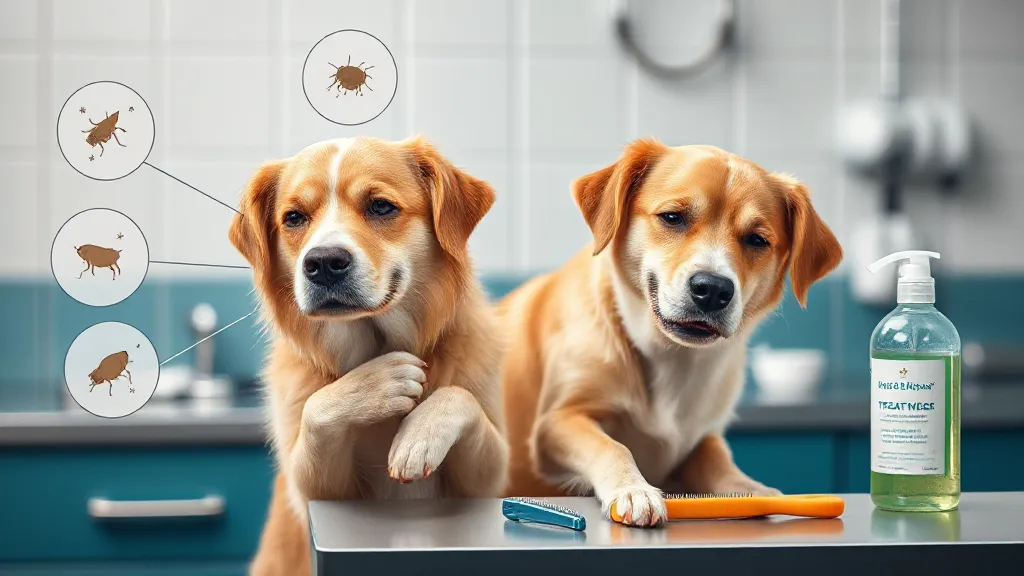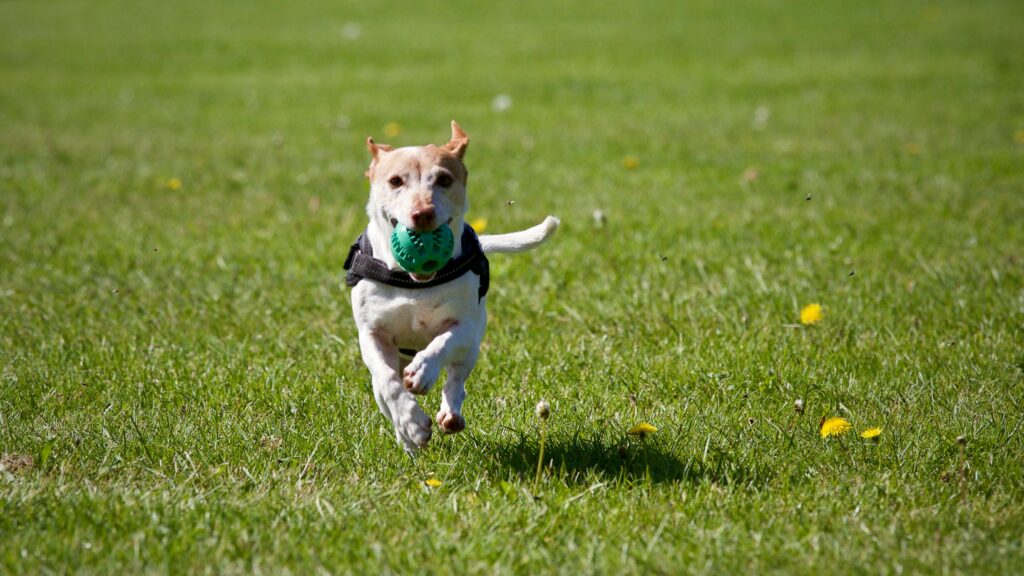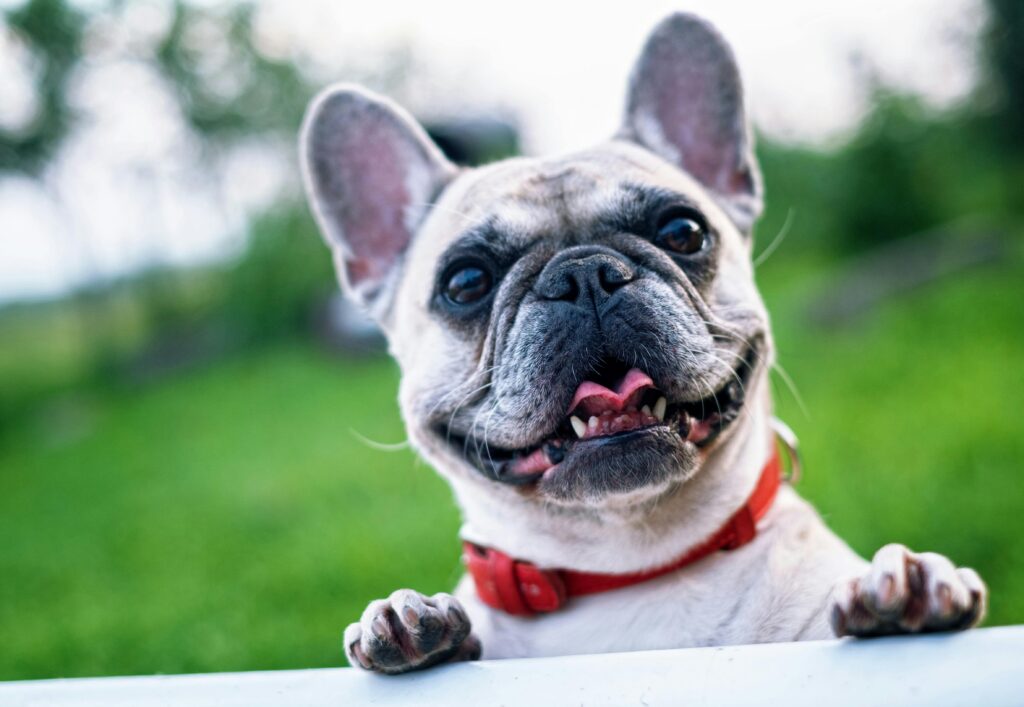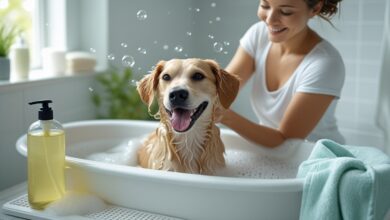Can Dogs Get Lice? Symptoms & Treatments

Table of Contents
Can dogs get lice? This is a question many dog owners may not consider until they face the discomfort of an infestation. While it’s common knowledge that lice primarily affect humans, our furry friends can, in fact, be susceptible to these pesky parasites, albeit less frequently. Understanding the symptoms and treatments for lice in dogs is essential for ensuring their comfort and well-being.
Why It Matters
The prevalence of pet infestations, including lice, has seen a steady rise. Studies indicate that pet ownership is at an all-time high, with over 67% of U.S. households having at least one pet. This increase in pet populations can lead to higher chances of infestations. Dog lice, which live on the skin and feed on blood, can cause serious discomfort, irritability, and even severe infections if left untreated.
Consider a scenario where your beloved pooch starts itching excessively. Respectively, you believe it’s just seasonal allergies. But what if those persistent scratches indicated something more serious? Identifying and addressing lice infestations early can prevent further complications and ensure our pets remain happy and healthily.
Key Insights

Recognize Symptoms Early
Understanding the symptoms of lice in dogs is crucial. Look out for:
- Excessive itching: Dogs will often scratch or bite at their skin.
- Hair loss: This may occur as a result of scratching or as a direct consequence of lice feeding.
- Skin infections: Secondary bacterial infections can arise due to scratching.
- Visible lice or eggs: Adult lice are around 1/8 inch long and may be visible in the fur. Their eggs, or nits, can be found attached to the base of the hair.
By recognizing these signs, you can act swiftly to seek treatment.
Seek Veterinary Advice
If you suspect your dog has lice, consulting your veterinarian is vital. Vets can confirm the diagnosis through a physical examination or skin scraping. They might also suggest specialized shampoos or topical treatments that are effective against lice. Early intervention is key in minimizing discomfort and preventing secondary issues.
Treatment Options
Treatment for lice usually involves a combination of medicated shampoos, topical treatments, and environmental control measures. Here are a few options:
- Medicated shampoos: These are specifically designed to eliminate lice and can be found at your vet’s office or pet stores.
- Topical treatments: Spot-on treatments provide a long-lasting solution. They not only eliminate lice but can also prevent future infestations.
- Cleaning the environment: Wash your dog’s bedding, toys, and any fabrics they frequently come in contact with. Regular vacuuming of your home will also help to eliminate lice eggs that may fall off your dog.
Prevent Future Infestations
Preventing lice is easier than treating them. Regular grooming sessions can help you keep an eye on your dog’s coat and skin health. Ensure that your dog is parasite-free by maintaining a consistent flea and tick prevention routine, as lice can thrive in unhygienic environments.
Resources & Tools

To help in treating and preventing lice infestations, consider utilizing the following resources:
Flea & Tick Prevention Products: Look for products with positive reviews. For instance, products like Frontline Plus and Advantage II typically carry good reputations with their 4.5-star ratings.
Pet Grooming Tools: Invest in a high-quality grooming comb and brush to regularly check for any unusual skin conditions or infestations.
Veterinary Consultation Services: Platforms like Chewy or PetMD can provide valuable insights and allow you to consult with vets remotely if you notice anything unusual about your dog’s health.
Mistakes to Avoid
When addressing lice in dogs, avoid these common errors:
Ignoring symptoms: Many pet owners wait too long to seek help. Overlooking excessive scratching can lead to more severe problems.
- Solution: Schedule a vet appointment as soon as you notice any unusual behavior.
Using Perpetual Home Remedies: Some dog owners might attempt home remedies without professional guidance.
- Solution: Always consult your vet before trying any home treatments. They can guide you toward effective methods tailored to your dog’s specific needs.
Neglecting the environment: Many mistakenly believe that treating the dog alone will eliminate lice, leading to re-infestations.
- Solution: Clean environment diligently using hot water for washing and regular vacuum cleaning.
Real Examples
Meet Sarah, a dedicated dog owner who noticed her goldendoodle, Max, was scratching excessively. Initially, she attributed it to dry skin; however, after some research, she recognized it might be lice. Following the tips outlined above, she consulted her veterinarian, treated Max with a specialized shampoo, and cleaned her home thoroughly. Within a few days, Max was back to his lively self, itching-free and happy.
Tailored Tips
For New Dog Owners: Regularly check your pup’s skin, especially in areas with dense fur, to catch any issues before they escalate.
For Active Families: If your dog spends time in parks or around other dogs, be vigilant about their coat and skin condition.
For Groomers and Professionals: Consider investing in lice prevention education. Keeping tools sanitized and regularly checking each pet can prevent infestations before they start.
Conclusion

In summary, understanding whether dogs can get lice and knowing the symptoms and treatments is essential for every dog owner. Regularly inspecting your dog’s skin and coat, seeking veterinary assistance when necessary, and utilizing the right treatments can prevent lice infestations.
Try one of the tips discussed today—check your dog’s coat for any signs of lice—and share your results below! For additional information, check out our related posts on dog care and health.
FAQs
Can dogs get lice from other dogs?
Yes, lice can be transmitted between dogs through direct contact.
What are the symptoms of lice in dogs?
The primary symptoms include excessive itching, hair loss, skin irritations, and visible lice or eggs in the fur.
How can I prevent lice in my dog?
Maintain a regular grooming routine, keep your dog’s environment clean, and use preventative treatments as recommended by your veterinarian.
Are lice harmful to dogs?
While they are not generally dangerous, lice can cause significant discomfort and lead to secondary infections if untreated.
How long does it take to treat a lice infestation?
With proper treatment, you should start to see improvement within a week, but complete eradication may take several weeks depending on the severity of the infestation.
By understanding these aspects, you can ensure that your canine companion stays healthy and lice-free!



